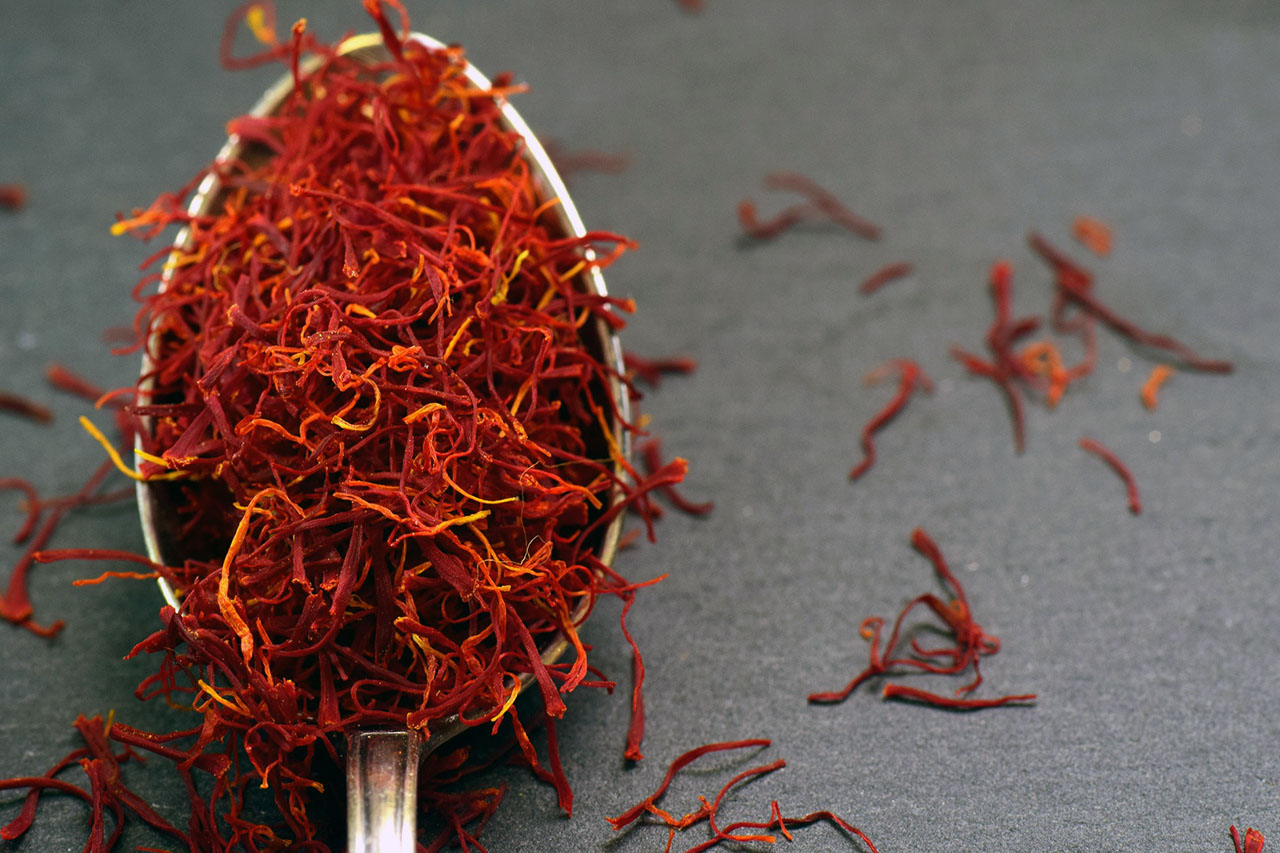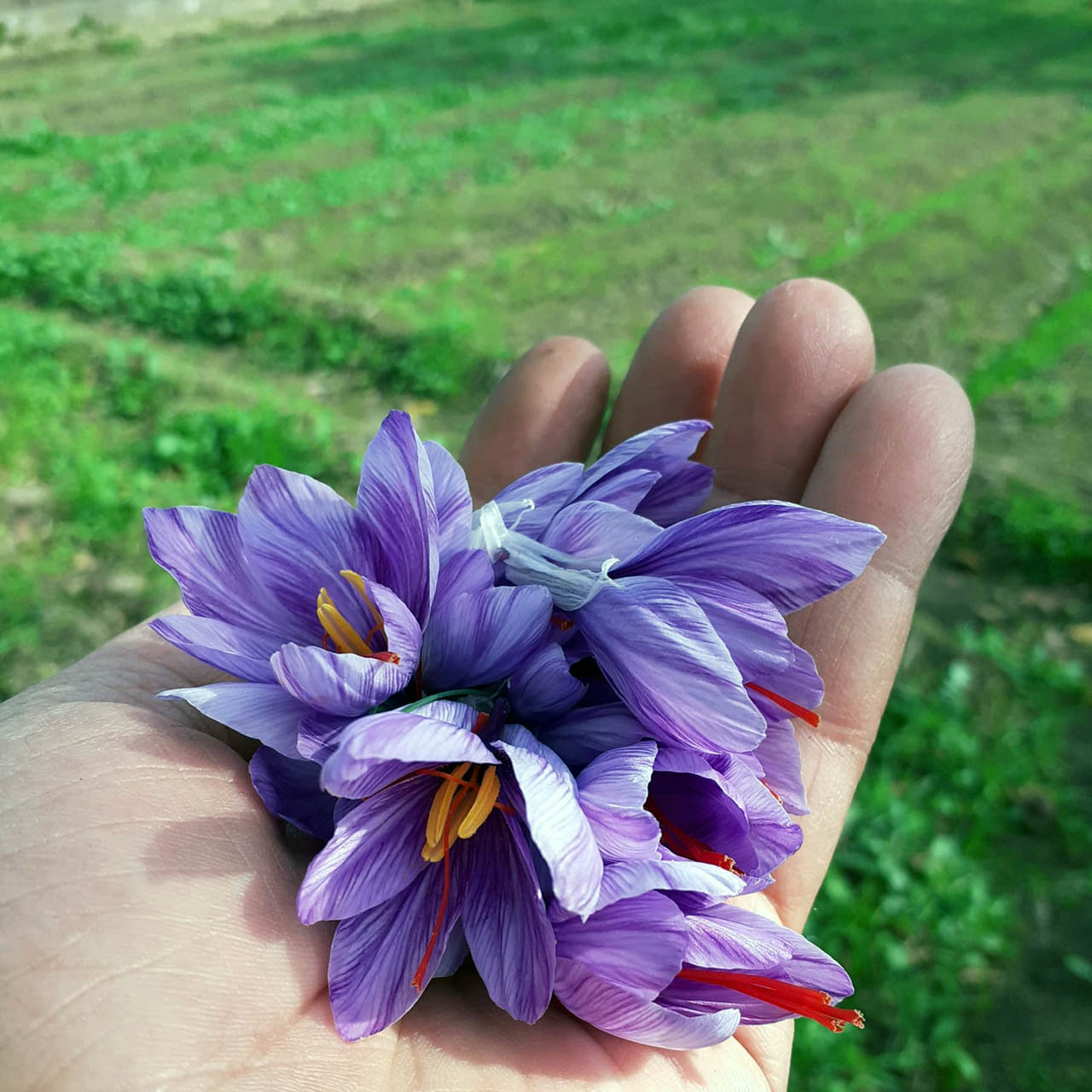Thanks to the passion and determination of two young women pioneers, the red-colored spice becomes part of the territory’s agriculture.
December 6, 2021, by Anna Volpicelli
When talking about saffron, it is easy to think about Lombardy, Abruzzo, or Sardinia. Few know that researchers and experts in the sector have been interested in Campania’s saffron in the last few years. The Mediterranean climate and the soil quality seem to have beneficial effects on the cultivation of the spice.
The excellence of the territory
In the area of Avellino, in the Vesuvian towns, and around Benevento, several farmers are committed with passion and a lot of work to cultivate the saffron, to the point that an entire organization has been created, like Rete Zafferano Campania (Campania Saffron Network).
Research and studies have been carried out at the University Federico II of Naples and the CNR of Avellino. “The quality of saffron from Campania – says Italo Petrillo, an agricultural expert from Montemiletto, in the province of Avellino, who has been involved for years in the cultivation and experimentation of the spice, not only for culinary use but also for medical use – is excellent. The analyses and researches have done until now by the competent institutions have ascertained its excellence.”
Besides the traditional cultivations, recent experiments have started the cultivation in the greenhouse and the liquefaction of the spice for cosmetic use. Saffron, moreover, has been recognized for centuries for its benefits. The Medical School of Salerno defined it as the spice of well-being, as in ancient times, also used to cure some mild forms of depression.
A continuous workforce
Despite the many positive effects, the cultivation process requires much care and hours of work. “The bulb, generally in Campania, is planted between mid-August and mid-September, whereas harvesting takes place between mid-October and the end of November,” continues Petrillo – “During the harvesting period, the flowers must be taken in the morning, before the sun discloses them or dew damages them. Once taken, they must be removed the pistils and dried for about 40-45 minutes and left to rest in the dark in a glass jar for 3-4 months”.
The work is a lot if you consider that 100 flowers produce just one gram of saffron, but this has not stopped farmers from carrying on this kind of cultivation. “An average bulb can give birth to about ten flowers,” explains the expert. Almost five years ago, saffron cultivation conquered the Amalfi Coast with two pioneering activities born in Tramonti and Agerola, carried on by two young women with the support of the family.

From the land to the kitchen
“Even though my family owns the land, I have never tried my hand at cultivation – says Federica Caso, 26, whose family owns Agriturismo Il Tintore in Tramonti – I am a masseuse, and I am finishing my studies to become a Spa Manager. I went to Eataly in Turin two years ago and fell in love with saffron”.
During his stay in Turin, she met some members of the Associazione Zafferano de L’Aquila (L’Aquila Saffron Association). “The director’s words caught my attention. They struck me so much that I insisted on bringing it to Tramonti and trying to cultivate it”.
With some hesitation from the parents, Federica’s brother Claudio Caso, who has worked with the family for years, and Federica’s partner, went to L’Aquila to see if the land was available in the farmhouse was suitable for growing saffron. “They came here to check out the land and said it was suitable for growing the spice. They gave us bulbs, and we planted them. It was 2019.”

Tailor-made recipes
On a handkerchief of land, a few meters from the garden where the salad, chicory, and broccoli are grown, during the autumn, the flower blooms, creating a mantle of indigo color. “It’s a magical flower because it gives you emotions and surprises. There are days when we find many flowers and others when we find three. It is a flower with a thousand functions. The pistils are used for saffron. The pollen can be used to create all the leavened goods, bread, panettone, and so on, while you can make herbal teas and even liquor with the petals. We now limit ourselves to the use of pistils also because we have a small third at our disposal.”
Once harvested, the pistils are cleaned, dried, and left to rest. “Cleaning the flowers is also a reunion time for the whole family. My mom, dad, brother, sister, and the kids were playing. Last year we produced about 40 grams of saffron that we used in the kitchen to prepare dishes for our guests.”
In addition to classic combinations, Agriturismo il Tintore serves a risotto with saffron, speck, provola cheese, calamarata pasta with chickpeas, salt cod, and saffron or white beans with salt cod. “Our philosophy is to serve what is harvested on our land. Our customers this year were pleasantly surprised by the saffron. They wanted to see where it’s grown. They were very intrigued. And this was perhaps the greatest satisfaction”.
From Milan to Agerola
“Saffron is not just about the soil, but also about planting and maintaining it,” says Marina Acampora, 29, owner of Azienda Agricola Rosa Rosae in Agerola. Saffron doesn’t need much water, and the soil must be cleaned and cared for. Marina’s father, Mauro, is originally from Agerola, and after living with his family in Northern Italy, he and his family moved to the Amalfi Coast in 2017. “My grandmother owned these lands – Mr. Acampora, by now a saffron expert, tells us – they have been abandoned for many years, and we have made a redevelopment by planting niche products including saffron, walnut trees, and olive trees.”
The company, which sells saffron to local restaurants, began its activity by planting bulbs purchased in Milan and now produces about 400 grams of product per year on the cultivation of about 3 thousand meters. “We do a two-year rotation on the land. After harvest, the bulbs are left to rest in the ground until about May. We pull the bulbs out of the ground every two years and replant them in another plot not far from the headquarters. In the cleared soil, we place sulfur beans, which provide nitrogen to the soil. This way, we avoid using manure,” Marina explains.

A reward for perseverance
The saffron produced is used for cooking and as a beauty elixir. For the past few years, the company has been marketing a line of facial cosmetics, a cream, and a serum, made with saffron and walnut oil. “We work with an artisan company in Salerno that transforms into our products. The powerful walnut oil we also sell in 100ml bottles.”
Recently, the Acampora family has partnered with Officine Alkemiche, a distillery specializing in Gin from Pagani. “We are trying to use the flower’s petals to color the Gin. It’s still a work in progress. We are waiting to see the results,” Mauro Acampora points out. In 2021, Rosa Rosae won the Ritratti di Territorio, Food Award Alfonso Pepe 2021, an award given to excellence from Campania “for the industriousness, diligence, and respect for peasant work for which it established a family farm that has become a stronghold to protect the Agerola area.”
The goal for both companies is to grow and increase production, learning day by day from this flower that, despite its magic, is unpredictable. “When you go out into the fields,” Mauro Acampora says, “you never know what that day’s flower holds in store.” And that’s probably both the challenge and the appeal of saffron.
